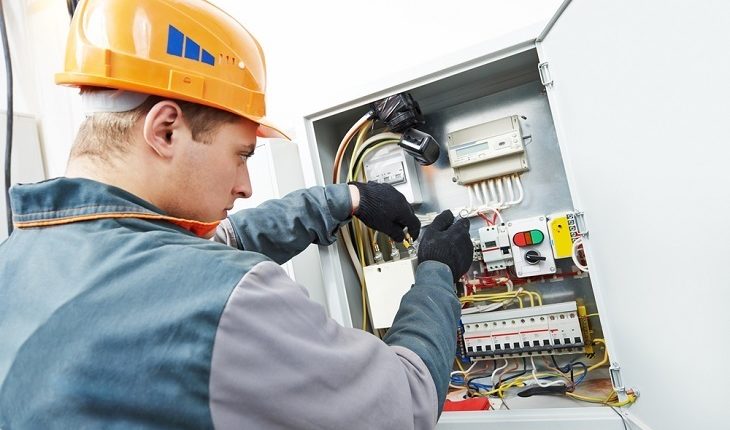Best Residential Electrician Service in the USA

Residential Electrician
A residential electrician in the USA primarily works in single-family residences or small apartment buildings. This occupation is in high demand as electricity and electrical systems are becoming increasingly complex. In addition, residential electricians are expected to handle a wide range of duties. This article will explore the salary and responsibilities of a residential electrician. You can also learn about the educational requirements to become a residential electrician in the United States. For more information, check out the article below.
Qualifications to be a residential electrician
Qualified electricians must meet educational requirements, have four years of experience, and pass a state-approved exam before they can become a master electrician. Usually, this means completing a four-year apprenticeship program and accumulating 8,000 hours of work experience, though some states allow for classroom hours to substitute for actual work experience. Journeyman electricians work under a licensed master electrician and supervise apprentices. To earn a master electrician license in New York, an electrician must have eight years of experience, a BA in engineering, and three to five years of experience as a residential journeyman.
Qualified residential electricians are skilled tradespeople. Some may choose to get a contractor’s license or establish their own business, but the majority of residential electricians work independently or own their own businesses. Electrical technicians receive specialized training in residential electrical systems, which includes extensive knowledge of electrical systems and how to read blueprints and technical diagrams. These electricians must also have the technical knowledge to use various power tools to complete a residential electrician job.
A residential electrician’s training and experience must be extensive in order to become a master. The average electrician has four to six years of experience, which varies by jurisdiction. To become a master electrician, a journeyman must have completed at least eight years of work experience in the electrical construction field. In most jurisdictions, classroom instruction is acceptable in lieu of hands-on experience. But even with this education and training, there are still many requirements to be a residential electrician.

Responsibilities
Electrical contractors install wiring, circuit breakers, and other electrical equipment in homes and businesses. Some of their duties include determining whether a system is safe to operate, troubleshooting electrical problems, and maintaining records and identification cards. Residential electricians may also install communications systems, voice and ethernet wiring, and grounding circuits. Electrical contractors use hand tools to perform their jobs, which can include ladders and scaffolds. They also use power tools to install wiring, pull cables through conduit, and fabricate parts to specifications.
A residential electrician typically works with no more than 240 volts of power. In addition to electrical installations, they may also install alarm monitoring systems and electrical fire safety systems. Residential electricians must be able to work well with people and in tight spaces. Residential electricians often work forty-hour weeks and may need to work overtime to complete a job. They may be required to be on call to attend to emergencies. They must also be knowledgeable of new technologies and trends in electrical systems.
Residential wiremen are responsible for installing electrical systems and connecting them to circuit breaker boxes. Residential wiremen must know municipal codes and be familiar with blueprints to install electrical systems properly. They must also be knowledgeable in wiring protection measures. Whether a residential electrician performs electrical wiring for a commercial establishment or a single family residence, it is their responsibility to keep the property safe and functioning. So, what exactly are the responsibilities of a residential electrician?

Salary
According to the Bureau of Labor Statistics, demand for electricians will increase by nine percent by 2026. This means over 60,000 more electricians are needed to keep up with the demand. While the United States has a low number of electricians, a few states, like California, Florida, and Texas, have higher than average demand for electricians. For example, California’s North Valley has nearly fifty electricians, while the Los Angeles metro area has more than 20,000 electricians. Among the states that have the lowest number of electricians are Vermont, Maine, and South Dakota. However, the working population in these states may still be favorable.
The average annual salary for residential electricians varies. The highest-paying residential electricians are white. However, electrical professionals in Hawaii earn about seventy-eight thousand dollars on average. In San Francisco, electricians earn up to ninety thousand dollars a year. On average, electricians in these states make $86,820 annually. However, salaries vary widely. It’s important to keep in mind that salaries vary greatly by city and region. In some cities, salaries are higher than others.
Generally speaking, salaries for residential electricians are fairly competitive. The range is based on experience and education. Salary information is available from the BLS, where you can find information on the different factors that affect compensation. Knowledge and complexity of the job, experience, contacts, and work environment all affect compensation. NextEra Energy and Tri-City Electric Co. are two of the highest paying companies in this industry. The IES reports highly competitive wages for residential electricians.




